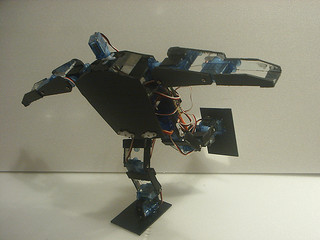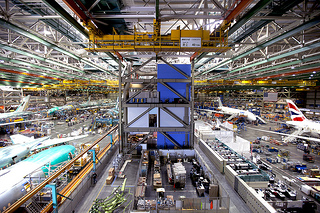How Robots Are Changing the Supply Chain Industry

Robots have been replacing human workers for decades, but research shows that there’s going to be a revolution in the supply chain industry. That’s because robots are getting smarter and cheaper. They can be programmed to do just about anything a human can do on the assembly line, packaging station, and many logistics maneuvers.
This article is for Premium Members only. Please login below to read the rest of this article.
Not a Premium Member yet? Become one today.
[login_form redirect=’https://www.procurementbulletin.com/how-robots-are-changing-the-supply-chain-industry’]
[show_to accesslevel=’Premium Members’]
The Research
According to WinterGreen Research’s Industrial Logistics Robots report, robots for palletizing, packaging, and material handling are projected to grow at a rate of 10.1 percent over the next couple of years and reach $31.3 billion by 2020. 65 companies were interviewed and 25 of the market leaders were studied extensively. The report said, “As production of goods and services embrace process automation, logistics robots are being used to adapt conveyor belts, end of the line tasks, and loading to a flexible systems approach.”
How Robots Are Being Used
You can use a robot to do just about anything in the supply chain, but they are easiest to incorporate at processes that are repetitive with no variable. For instance, at a packaging station, a robot could easily fill a box will packaging material and then tape it up. However, robots are not limited to no variable tasks because programmers are making them smarter. Some companies use robots for complex tasks such as picking items from their warehouse.
One good example of robots in the supply chain is 3D printers. They are revolutionizing the supply chain industry because goods no longer have to be transported and stored in a warehouse; they can be printed at the nearest facility to the customer. This saves lots of money and customers are able to get their purchases faster than ever before.
Another great use of robots in the supply chain is in the food industry. Robots don’t carry airborne illnesses and other diseases that can contaminate food. Therefore, less food gets introduced to disease along the supply chain because fewer humans handle it. Robots can be programmed to sort through good and bad food, too.
And, one of the newest advances in logistics robots is delivery drones. Amazon has been trying to get approval to use them in their supply chain, but there have been hold ups from the government. However, these flying robots could be the future of logistics.
Supply Chain Implications
From a financial standpoint, it makes a lot of sense to use robots instead of human workers. There will always be a need for humans to supervise robots to make sure they are doing what they are supposed to, but large groups of manufacturing and logistics workers could be eliminated, saving millions of dollars. There is some cost in using robots, such as the initial purchase, software development, maintenance, and energy, but these costs are a lot less than employing a human, even if you don’t offer comprehensive benefits.
Robots do raise concerns for the economy because they eliminate jobs. However, many companies that are using robots were previously outsourcing their work to other countries anyway. That’s why the U.S. is primarily known as a service-based industry.[/show_to]





